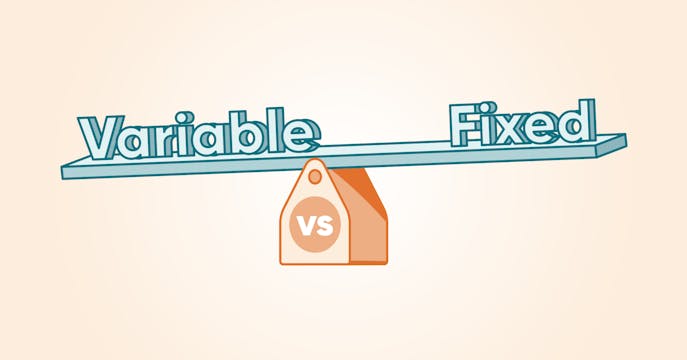Prime rates vs. mortgage rates.
The prime rate sets the 'financial' temperature of how both fixed and variable mortgage rates fall in.
Banks can't set any mortgage rate they want — they have to manage their expenses and revenue in line with current market conditions. So, a higher bank prime rate means you'll pay a higher mortgage rate overall, no matter the rate type.
But thanks to competition for your mortgage business, you may not have to pay a mortgage rate as high as the bank's prime rate.
Mortgage lenders may offer some term rates lower than prime for stronger mortgage applications, especially those that qualify for default insurance (called a high-ratio mortgage) and carry less risk.
Sometimes, that mortgage rate for a fixed-rate term can be 2.20% or lower than the posted 'prime rate,' depending on whether the lender is a big bank or mortgage-only lender and based on the product terms and borrower's financial details.
Variable mortgage rates are a discount directly off the bank's prime rate and can range from -1.5% to -0.5%, depending on lender competition and the economic environment.
How does the prime rate influence variable-rate mortgages?
The prime rate floats and directly informs other 'floating' interest rate products, such as variable-rate mortgages and HELOCs (home equity lines of credit).
A change in the prime rate means the same move for your variable mortgage rate.
If you have adjusting mortgage payments, your payments will go up or down depending on the prime rate change.
If you have fixed payments, your mortgage amortization will tick up or down according to the interest-cost difference (affecting whether more or less is going toward your mortgage principle).
Fixed mortgage rates point the way to prime rate movements.
The prime rate doesn't lead fixed mortgage rates up and down like variable rates. Instead, fixed rates anticipate where the prime rate is going before it gets there.
Fixed rates are based on a different interest-rate mechanism — the bond market, specifically bond yields. Yields have similar terms (such as 2-year, 5-year, and so forth), and banks set their fixed mortgage rates at a spread of 1% to 2% to compete with bonds to attract capital.
So how do bond yields anticipate prime rate changes?
Bond traders trade government bonds all day, every day. They have a view on where they think prime rates will go over the next 5 years, and you can see their combined opinion changing in every bond price movement.
Traders often disagree. Half believe the 5-year bond yield will trade higher, and the other half think it'll trade lower. The middle ground is where the market lands (supply and demand finding an equilibrium) and is a tell for where the prime rate may be going.
So, when bond yields trend up (and fixed rates soon after that), the market expects the prime rate to rise, and vice versa.
5-year fixed rates are currently lower than a 5-year variable rate — usually, it's the other way around. The markets expect the prime rate to trend down, so the 5-year fixed rate already has its eyes fixed (down) on the future, waiting.
Note: The bond market is massive, much bigger than the stock market. And like most things financial, it can get complicated. Get a simpler explanation of bond yields here.




